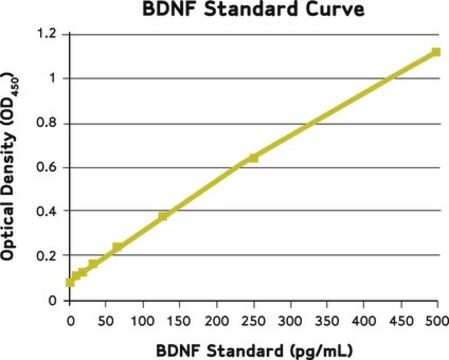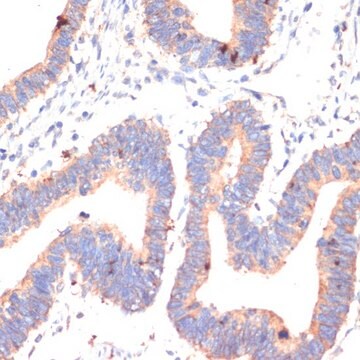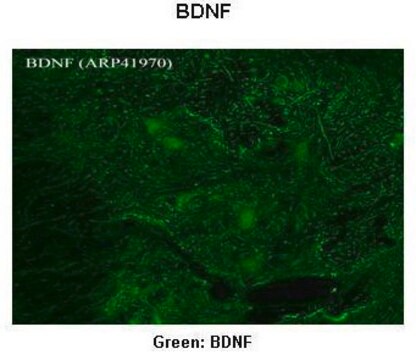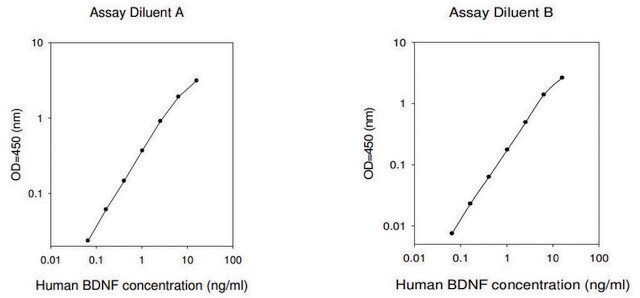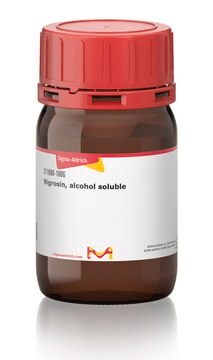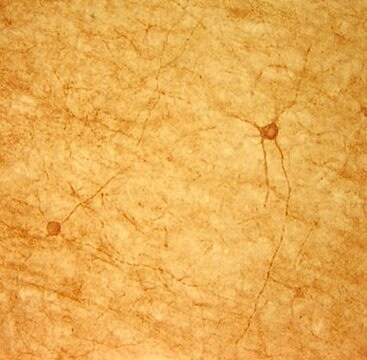AB1534
Anti-Brain Derived Neurotrophic Factor Antibody
serum, Chemicon®
Synonim(y):
brain-derived neurotrophic factor
About This Item
Polecane produkty
pochodzenie biologiczne
rabbit
Poziom jakości
forma przeciwciała
serum
rodzaj przeciwciała
primary antibodies
klon
polyclonal
reaktywność gatunkowa
rat, human, mouse
producent / nazwa handlowa
Chemicon®
metody
ELISA: suitable
immunohistochemistry: suitable
western blot: suitable
przydatność
not suitable for activity/function inhibition
numer dostępu NCBI
numer dostępu UniProt
Warunki transportu
wet ice
docelowa modyfikacja potranslacyjna
unmodified
informacje o genach
human ... BDNF(627)
Opis ogólny
Specyficzność
Immunogen
Zastosowanie
1:1000-1:2000 dilution of a previous lot was used in immunohistochemistry (see suggested protocol).
ELISA:
1:1000-1:2000 dilution of a previous lot was used in ELISA.
Bioassay:
Does not inhibit BDNF biological activity.
Optimal working dilutions must be determined by end user.
Neuroscience
Neurochemistry & Neurotrophins
Neuroinflammation & Pain
Jakość
Western Blot Analysis:
1:500 dilution of this antibody detected BDNF on 10 µg of mouse brain lysates.
Opis wartości docelowych
Postać fizyczna
Przechowywanie i stabilność
Komentarz do analizy
Brain tissue
Inne uwagi
Informacje prawne
Oświadczenie o zrzeczeniu się odpowiedzialności
Nie możesz znaleźć właściwego produktu?
Wypróbuj nasz Narzędzie selektora produktów.
polecane
Kod klasy składowania
12 - Non Combustible Liquids
Klasa zagrożenia wodnego (WGK)
WGK 1
Temperatura zapłonu (°F)
does not flash
Temperatura zapłonu (°C)
does not flash
Certyfikaty analizy (CoA)
Poszukaj Certyfikaty analizy (CoA), wpisując numer partii/serii produktów. Numery serii i partii można znaleźć na etykiecie produktu po słowach „seria” lub „partia”.
Masz już ten produkt?
Dokumenty związane z niedawno zakupionymi produktami zostały zamieszczone w Bibliotece dokumentów.
Nasz zespół naukowców ma doświadczenie we wszystkich obszarach badań, w tym w naukach przyrodniczych, materiałoznawstwie, syntezie chemicznej, chromatografii, analityce i wielu innych dziedzinach.
Skontaktuj się z zespołem ds. pomocy technicznej
